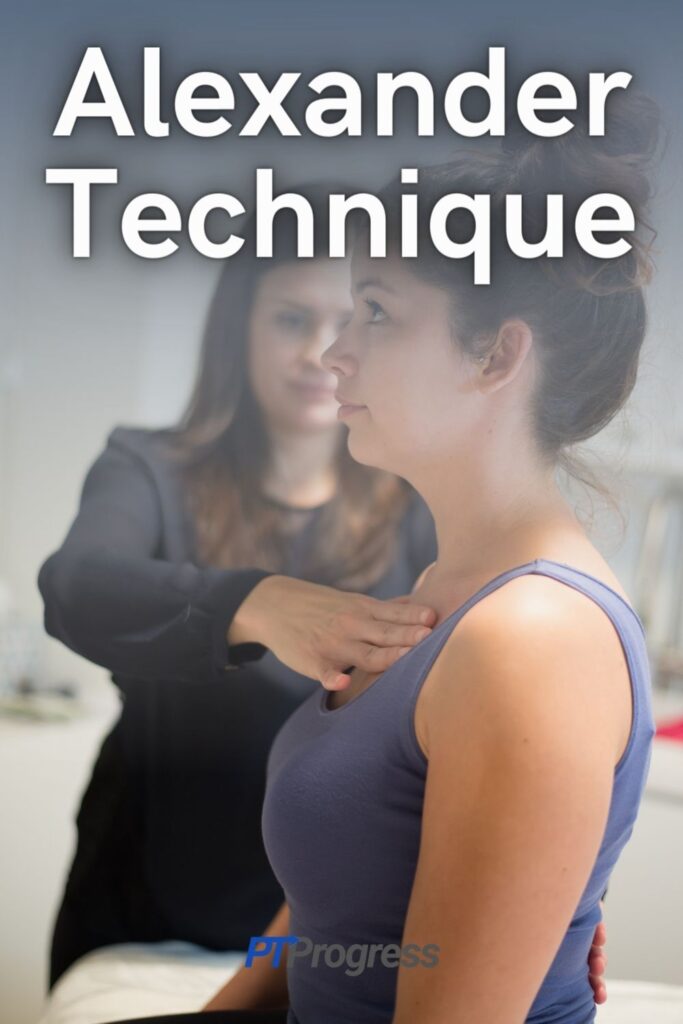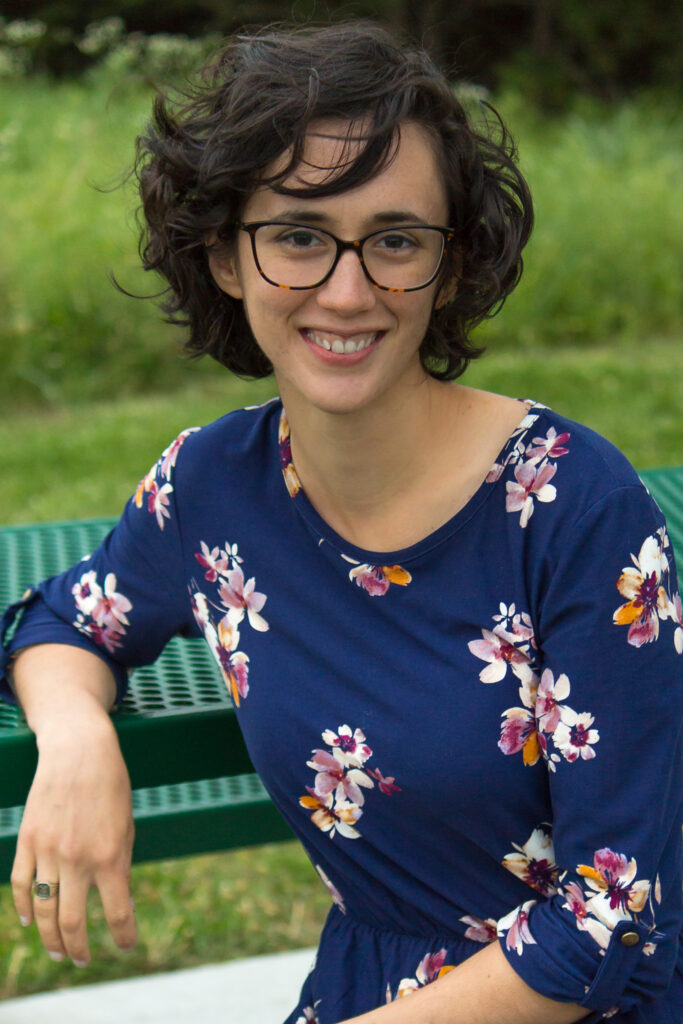
Ever heard of Alexander Technique? Popular among performers, athletes, and laymen alike, Alexander Technique (AT) has been utilized for decades to improve posture and relieve tension in the body. Recent research shows practicing AT can reduce pain and improve balance.
Although the technique differs significantly from physical therapy, it shares a similar focus of retraining body movement over the course of several sessions. Physical Therapists might consider pursuing AT certification to offer this method of therapy outside of the clinic.
Benefits of Alexander Technique
Beginning in the late 19th century, F. M. Alexander developed his technique in order to improve vocal strength and production. By lengthening his spine and retraining his diaphragm, he was able to resume vigorous public recitation without fatigue and strain. In similar fashion, beginner pupils of AT learn first to correct their spinal alignment naturally and effortlessly.
Beyond posture, the method progresses by reforming the movement patterns that underlie areas of stress, tension, and pain in the body. The instructor chooses a variety of lifestyle actions, such as standing, sitting, lunging, and walking, to demonstrate and evaluate movement. They will then bring to the pupil an awareness of harmful posture and spinal contraction, and train the pupil to unlearn these baseline habits. The goal of Alexander Technique is to ingrain graceful poise and controlled movements into daily life, such that the body resists strain and overuse. For best results, pupils should practice their technique at home in between sessions.
Alexander Technique vs. Physical Therapy
AT differs from PT in substantial ways, but the two therapeutic practices share a common goal. Both physical therapy and Alexander Technique focus on recalibrating the way you move and use your body through manual guidance and verbal cues. The strategies behind Alexander Technique mirror those of a physical therapist’s neuromuscular re-education treatment. Both therapies are meant to be sustained over several weeks and integrated into daily movement.
Although the treatment may look similar, the instructor training is vastly different. Compared to AT instructors, PTs maintain a much more detailed knowledge of anatomy and health, having completed coursework typically at the doctoral level. Although certification takes three years for either career, the credentials for practicing Physical Therapy are much more extensive (and expensive!) than for practicing Alexander Technique.
As opposed to a PT, an AT instructor cannot offer medical advice to a pupil or rehabilitate a severe injury. Rather, Alexander Technique is more like a preventative treatment, an intervention in posture before overuse and stress injuries occur. The Technique can also be used to support a Physical Therapy regiment, or as part of a regular practice once PT treatment has concluded.

Who benefits from Alexander Technique?
Alexander Technique benefits people of all ages and at nearly all levels of physical fitness. Its slow, gentle method is used to correct postural impairments and soothe musculoskeletal pain. AT can help alleviate stress – both physical and mental – and enhance skills in athletics and the performing arts. Among musicians, Alexander Technique improves stage presence, reduces performance anxiety, and boosts vocal quality and projection in professional singers. AT also enhances presentation skills and public-speaking confidence in the many academics and businesspersons who practice it regularly.
But you don’t need to be in the public eye or under insurmountable stress to benefit from AT. Even a common, sedentary lifestyle is rife with built-up tension, chronic pain, and overuse from typing at a computer or driving long hours. Other common ailments, such as contracted posture and an unsteady gait, are characteristic of aging; AT can help reverse such effects.
Overview of the intended beneficiaries of AT
People who…
- Perform (sing, dance, act, play music)
- Play amateur or professional sports
- Speak publicly
- Use a computer extensively
- Carry young children regularly
- Exhibit poor posture
- Desire greater flexibility
- Experience chronic back, neck, and shoulder pain
- Are at a risk of falls (elderly population)
Does Alexander Technique actually work?
Alexander Technique is currently not covered by most major insurance carriers in the US due to a dearth in research to support the benefits AT practitioners claim to experience worldwide. Just because insurance companies aren’t convinced, though, doesn’t mean they’re right (more likely, they’re stingy).
Over the last 15 years, a number of research studies have shown significant benefits of practicing AT. These results are especially robust in people with chronic pain and elderly adults with balance issues.
Research Supporting Alexander Technique
For instance, a 2015 study showed that older adults who were long-time instructors of Alexander Technique walked with a smaller stride and a less-variable gait compared to age-matched, healthy adults with no training in Alexander Technique. The instructors walked more youthfully, with increased hip and knee flexion and a greater range of ankle motion. In a separate study, AT instructors aced the sit-to-stand movement many adults find challenging as they age. Not only did the AT instructors maintain better spinal alignment, they kept their feet better planted than did their non-AT-trained counterparts. Taken together, these studies show that long-term practice of Alexander Technique can help one age stronger and with more stability.
Besides reducing fall risk, Alexander Technique alleviates chronic pain. Subjects with knee osteoarthritis experienced a 50% reduction in pain following 20 lessons of Alexander Technique. In a larger study, 579 subjects were given either massage therapy, 24 Alexander Technique lessons, or an exercise regimen to treat chronic back pain. AT instruction produced the best results in relieving back pain after one year – even better than exercise.
You can do your own research behind the benefits of Alexander Technique on postural tone, neck pain, Parkinson’s symptoms, and many more applications. All these studies are recent, within the last ten years, and show that just because the science is still catching up doesn’t mean you have to. Whether you’re looking to relieve chronic pain, manage daily stress, or age strong, Alexander Technique is a time-tested, healthful method to get you there.
How many sessions you’ll need
Importantly, all the effective research studies I cited above utilized at least 10 sessions of Alexander Technique to produce results. As with most things in life, you can’t fix posture overnight, and one AT session won’t end your chronic pain. Retraining your carriage, gait, and posture takes a concerted effort over several weeks – but the results are well worth it. Depending on your needs, lifestyle, and means, you may require a treatment of as many as 30-40 Alexander Technique sessions. However, most instructors recommend 8-12 for chronic issues, and many offer an initial consultation for free.
How much it costs
A single AT session usually lasts between 45 minutes to an hour. Keep in mind these sessions are entirely customizable and done 1-on-1 with the instructor, much like in a physical therapy session. Your AT instructor will take a full assessment of your movement and tailor an intervention treatment for your specific issues and lifestyle demands. For such specialization, you’ll pay between $55 – $90 per session; rates vary by region and by instructor. Recently, many studios have begun to offer remote AT sessions to help perpetuate treatments when in-person instruction is not feasible or advisable. In such cases, the instructor will rely solely on verbal direction and movement demonstration to guide the pupil through a lesson.
Teaching Alexander Technique
Maybe you’re a PT interested in adding Alexander Technique to your oeuvre, or you’re a body-conscious individual looking to administer life-changing therapy in your spare time. Becoming an AT instructor does not require going back to school or earning a degree in physical science, and you certainly don’t need a doctorate to practice, as you would for PT.
The career outlook for Alexander Technique instructors is unclear, partly because AT instruction is often one of many specialities – such as yoga, pilates, and massage therapy – offered by a single practitioner. Physical therapists have also been known to add an AT certification out of personal and professional interests.
Although there is much higher demand for Physical Therapists, the hourly rate of AT instruction is generally much better, anywhere from $60-120/hour. So, if you’re able to build your own studio and attract a steady stream of clients, you could make a nice career out of it.
But first! The training:
In order to become an Alexander Technique teacher, you must complete a three-year Teacher Training course in a facility accredited by the American Society for the Alexander Technique (AmSAT). These courses encompass 1600 hours of hands-on training, typically 12-20 hours per week for three years. The ratio of students to instructor is always kept at 5:1 or less. To be certified, teachers must have an understanding of F.M. Alexander’s writing and related literature, demonstrate a basic knowledge of anatomy and physiology, and achieve a high technicality of skill.
At least 80% of the class hours constitute practical work in Alexander Technique. In addition to hands-on practice and shadowing, curriculum may include coursework, reading and written assignments, special projects, and residentials. Tuition for the Teacher Training course varies by facility, but budget for $18,000-25,000. (Scholarships are available!)
Become an AmSAT member
Once you have completed your AT Teacher Training, you will be eligible for AmSAT certification and membership. AmSAT members are privy to discounts on books, workshops, conferences, and various education opportunities. They also receive access to the AmSAT website database and a subscription to AmSAT Journal.
During your three years of Teacher-Training coursework, membership is free. For your initial three years as a practicing AT instructor, you’ll spend $155 each year on membership. The fee is $270 for your fourth year of certification and following.
| Time period: | Teacher training | Years 1-3 of certification | Years 4+ of certification |
| Annual membership fee: | $0 | $155 | $270 |
Membership is open to the public, however; it’s not just for AT instructors. A non-voting, supporting membership costs just $55 and includes many of the same perks.
In Summary
So there you have it! Alexander Technique is a proven, beneficial way to correct pain, tension, and underperformance in the body – in posture, gait, vocal production, anxiety, and more. Although research supporting these benefits is spare, it is also ongoing, with funding available for further studies. PTs interested in incorporating Alexander Technique into their practice should take a Teacher Training course, and individuals interested in leading therapy techniques might consider Alexander Technique certification.

This article was written by Naomi Benecasa, a cellist with a Bachelor’s in Music Performance and a Master’s in Music Psychology. Fascinated by fitness and fermentation, she provides copywriting and editing services for PTProgress from her home in New York.

